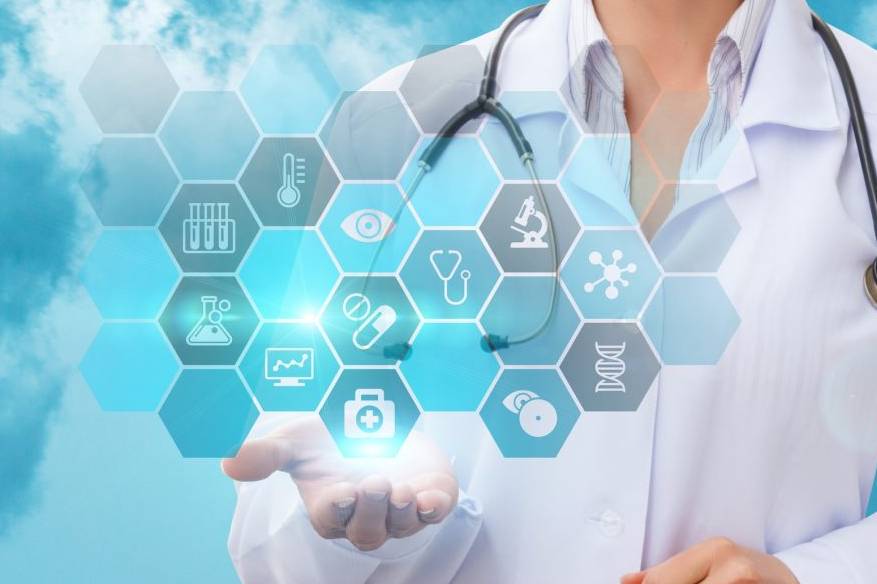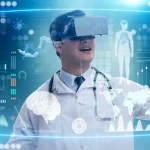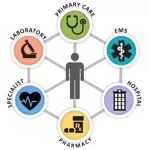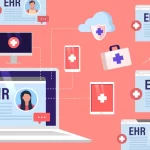
Health Information Management and Healthcare Information Technology
August 12, 2021Individuals working in healthcare all around the world collect and create a large quantity of personal health information on patients. Health information include not only personal information and private health data, but also payment forms and transactions. Clinical notes, pharmacy data, and outpatient care records are additional examples of protected health information.
As technology has advanced, so has the potential for medical records’ dependability, speed, efficiency, and usefulness. This, however, raised the possibility of information being misused, sold, or accessed without an individual’s consent.
As technology developments outpaced ethical and legal regulations, defining medical/healthcare information management became important.
Health Information Management/Technology
Health information management and technology are two distinct job paths within the healthcare sector. They are, nevertheless, closely related. These fields deal with patient medical data and how it is kept, accessed, managed, and shared. Professionals in health information management and technology strive to comprehend healthcare data as well as the software and systems that enable that data to be used. Both disciplines work together to improve the lives of medical patients.
What is health information?
Health information is the data related to a person’s medical history, including symptoms, diagnoses, procedures, and outcomes. A health record includes information such as: a patient’s history, lab results, X-rays, clinical information, demographic information, and notes.
A patient’s health information can be viewed individually to see how the patient’s health has changed; it can also be viewed as a part of a larger data set to understand how a population’s health has changed, and how medical interventions can change health outcomes.
What is health information management?
Health information management is the collection analysis, storage and protection of the quality of patient health information. This information can be either paper-based, a combination of paper and digital (hybrid) or as is more often the case, a fully electronic health record (EHR).
According to The American Health Information Management Association (AHIMA) ; “Health Information Management (HIM) is the practice of acquiring, analyzing, and protecting digital and traditional medical information vital to providing quality patient care.”
Healthcare information management the ways in which patient medical information and data is handled, no matter what its form. Both paper files and electronic health records fall under this category. The professionals who are trained in healthcare information management are also knowledgeable about the business end of healthcare, which includes such things as healthcare organizational workflows, medical compliance, insurance protocols and revenue cycles. These folks are responsible for the maintenance of patient records and the dissemination of the information contained within them. They must protect the confidentiality of patient information and ensure that it is shared only with those who are authorized to view it. These tasks are essential to the smooth flow of medical practices.
Healthcare Information Technology
Healthcare information technology applies to the technical side of information management. These professionals develop and utilize the software, hardware and systems that are needed to store and manage patients’ medical data. They have technological backgrounds in order to be able to provide the necessary support for the smooth operation of these complex systems and networks. They handle the transmission, modeling and warehousing of data. Healthcare information technologists build and maintain the foundation of the records systems the information managers rely upon each day. These information technology professionals are absolutely crucial to the maintenance and use of the technology that keeps patient records protected and accessible.
Basic Functions of Health Information Management
These functions are really the overarching themes/specialty areas that fall under the HIM umbrella:
- Health information management encompasses coding and revenue cycle, informatics, data analytics, and information governance.
- Coding and revenue cycle management includes assigning diagnostic and procedural codes for billing to managing the revenue flow from the patient registration to final discharge.
- Informatics oversees the technology aspects of managing health information, whereas data analytics manages the integrity of data through mapping and quality improvement processes.
- Information governance focuses on HIM operations and compliance and ensures the protection of protected health information (PHI).
What are a health information manager’s primary responsibilities?
Professional health information managers manage and construct health information programs to guarantee they accommodate medical, legal, and ethical standards. They play a crucial role in the maintenance, collection, and analyzing of data that is received by doctors, nurses, and other healthcare players. In return these healthcare data contributors rely on the information to deliver quality healthcare. Managers must work with a group of information technicians to guarantee that the patient’s medical records are accurate and are available when needed.
Health information managers are responsible for information governance, or ensuring enterprise-wide health data integrity, privacy, and security. Some of their main responsibilities may include:
Implement processes and systems to support accurate and complete medical record documentation
- Work with physicians to improve the quality of documentation
- Work with coding staff to ensure accurate coding for reimbursement and clinical care
- Comply with state and federal laws and standards related to privacy, security, and record completion
- Track and trend audits and denials from third-party payers and auditors
- Prepare and analyze clinical data for research purposes, process improvement, utilization management, mandatory reporting, and more
Healthcare facilities often utilize coders and claims specialists, even third-party medical coding services, to handle medical records and healthcare revenue cycle management. HIPAA rules also impact what information you share with business associates. Your organization might be liable for damages even if a breach occurred due to a third-party business, which is why it is important to choose certified HIM companies.
In addition to the roles above, HIM staff would also implement and enforce security and privacy rule adherence on top of designing and improving network security. At a minimum, this includes considering administrative, technical, and physical safeguards for traditional and electronic PHI.
Health information management duties can also include analysis and implementation of improvements. For example, an analyst might use the aggregate available information to determine patterns in various areas which can be used to devise improvements to an organization.
Importance of Health Information Management
HIM is vital for every healthcare organization and associated business. Not only are there legal requirements that must be adhered by to receive certain incentives and avoid penalties, but organizations have an ethical responsibility to protect PHI in their possession.
Breaches impact patient trust in a healthcare provider and may prohibit a patient from sharing vital information for fear of exposure. Hackers can also steal patient payment information causing residual harm such as identity theft and stolen money. Both of those factors can impact a patient’s willingness to seek care at certain providers.
A focus on HIM also allows an organization many positive benefits such as the potential for increased efficiency and optimization of healthcare information system access and other key aspects involved with revenue cycle management. A coordinated effort to standardize and efficiently operate tasks involving PHI will take a manager dedicated to the task, especially in larger organizations.
Health Information System Examples
Anyone in healthcare, such as patients, doctors, clinical staff, and public health officials, can all make use of a Health Information System. This compiles data that can later be used to assist in making health-related decisions.
Examples of such systems include the following:
Practice Management Software
This software is designed to assist in daily operations involved in healthcare, such as scheduling and billing. This is used in most hospitals and clinics in order to perform daily administrative tasks.
Electronic Health Record or Electronic Medical Record
These two terms basically refer to the same thing. This is an electronic record of a patient’s health history, which includes lab tests done and results, pre-existing conditions, treatments, and all other necessary information that a health practitioner would need to make proper decisions in treating a patient. This is probably one of the most common Health Information Systems today.
Portals for Patients
These Health Information Systems allow patients to access and view their personal health data, which include medications, appointments, schedules with doctors, lab results, and much more, through an internet connection. It also allows them to communicate with healthcare professionals, such as making appointments or requesting prescription refills.
Master Patient Index
Patient records can be separated through different databases, so it is the job of the Master Patient Index to compile all these records. It makes finding information easier and at the same time, removes the hassle of having to maintain several duplicate records.
This is a convenient Health Information System, since it allows medical personnel to receive patient data. It can monitor different things such as glucose levels and blood pressure. By monitoring these, medical personnel know when they need to intervene.
Clinical decision support system analyzes the different data it can get from clinical and administrative systems of the organization and compiles them. This can help in clinical decisions by providing health personnel with the data they need.
Security and HIM
Healthcare breaches have become a significant problem for healthcare providers today. In 2015 almost 100 million healthcare records were breached by cyber attacks. The impact from breaches has declined since then due to the implementation of privacy and security regulations for healthcare providers; however, the number of attempted breaches has increased over that same time.
As attackers become more organized or sophisticated the potential for successful breaches will increase unless organizations keep pace or excel with relevant health information management practices. Those interested in stealing health information may also gain access through the front door. In organizations that utilize unsecured wireless networks, or have lax regulations concerning secured network devices, someone could gain access from within and walk out with the data.
Benefits of Having Health Information Systems
When it comes right down to it, Health Information Systems can be beneficial to healthcare institutions. It provides them with:
Collaborative Care: With the use of these systems, patients can now be treated collaboratively, since facilities can now share their data.
Data Analytics: All the data are correlated and compiled by these systems, which help in making decisions. This improves overall patient care, which is the most important factor for healthcare institutions.
Controlled Costs: Digital networks allow for cost savings, since data sharing has become more efficient.
Population Health Management: The aggregated data collected by these systems can identify trends within the population, which can lead to better decision making and preparations.
Future Development
According to current trends, information and data will become an ever more important part of the healthcare sector as time goes on. As previously said, many hospitals and care facilities have yet to migrate to digital data, which means that the current market for health information services is considerably less than what can fairly be expected to be in the coming years.
Preventative care is one of the most potential areas for future development in the health information business. According to industry experts, we will soon be utilising smart gadgets to monitor healthy individuals for symptoms of illnesses such as diabetes and heart disease before they progress to the point of requiring care. This application has the potential to significantly reduce the number of costly chronic diseases that the health-care system is required to treat on an ongoing basis. It will also necessitate an exponential increase in the amount of health information collected, secured, and preserved, possibly opening up a slew of new prospects in the area.


















